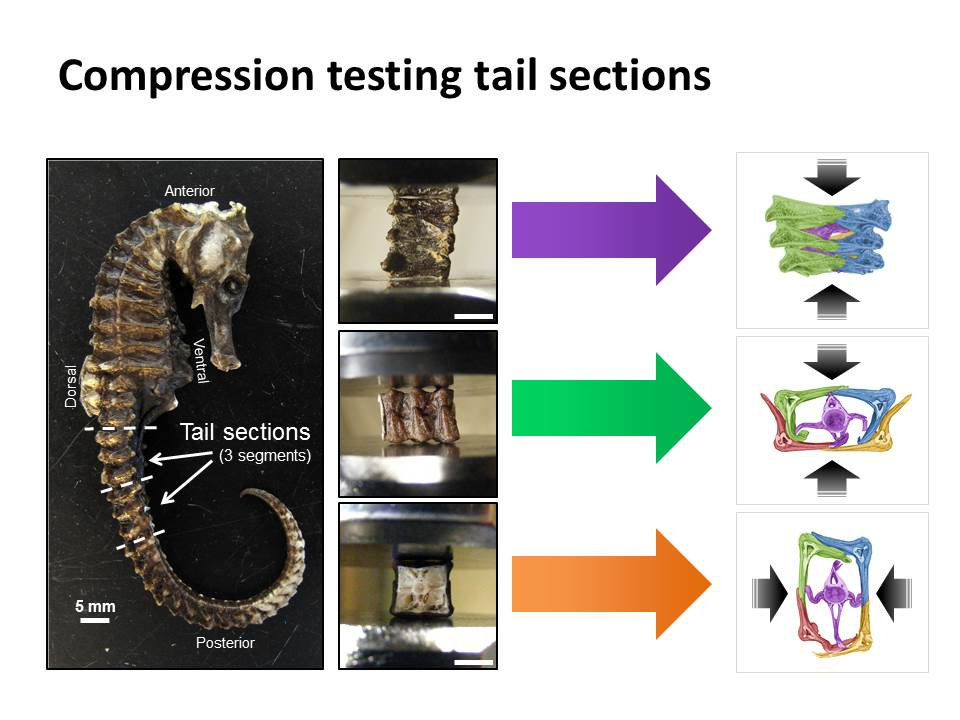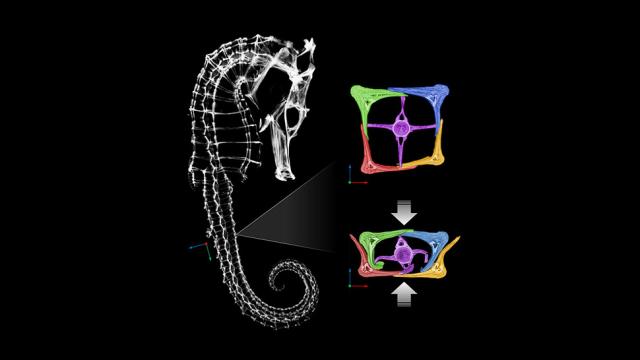Seahorses are amazing little creatures — the males give birth, they swim upright and they’re incredibly adorable. But did you know that the seahorse is one of the toughest little creatures on our tiny little world? In recent tests, researchers have found that the tail of the underwater equine can be compressed to about half its size. And that could have major implications for how we build the armour of the future.
According to engineers at UCSD’s Jacobs School of Engineering, the Hippocampus could one day lead to the creation of a robot that can mimic the seahorse’s tail for use in hostile situations while withstanding incredible amounts of pressure. Or maybe some next level armature.
“The tail is the seahorse’s lifeline,” because it allows the animal to anchor itself to corals or seaweed and hide from predators, said Michael Porter, a Ph.D. student in materials science at the Jacobs School of Engineering. “But no one has looked at the seahorse’s tail and bones as a source of armour.”
What researchers found in the monkey-like tails of some dead seahorses were four L-shaped bony plates protecting the vertebrae that when compressed could slide or pivot into each other without ever affecting the vertebrae.
Also fascinating is that seahorse bone is composed of only about 40 per cent mineral compared to cow bone, which is 65 per cent mineral. The rest is made up of 33 per cent water and 27 per cent organic compounds — mostly proteins. During the load tests, the UCSD engineers found that the connective tissue between the bony plates and tail muscles took on most of the pressure, leaving the vertebrae unharmed.

Actual armature application based on the seahorse could be tough considering the bulk that would come with the sliding plates structure but might actually work if made piecemeal, like a gauntlet.
So what’s next? Artificial bony plates will be 3D printed and paired with polymers (faux muscles) in the creation of a “hybrid” robotic arm that can grip and be used in hostile environments or in medical procedures.

